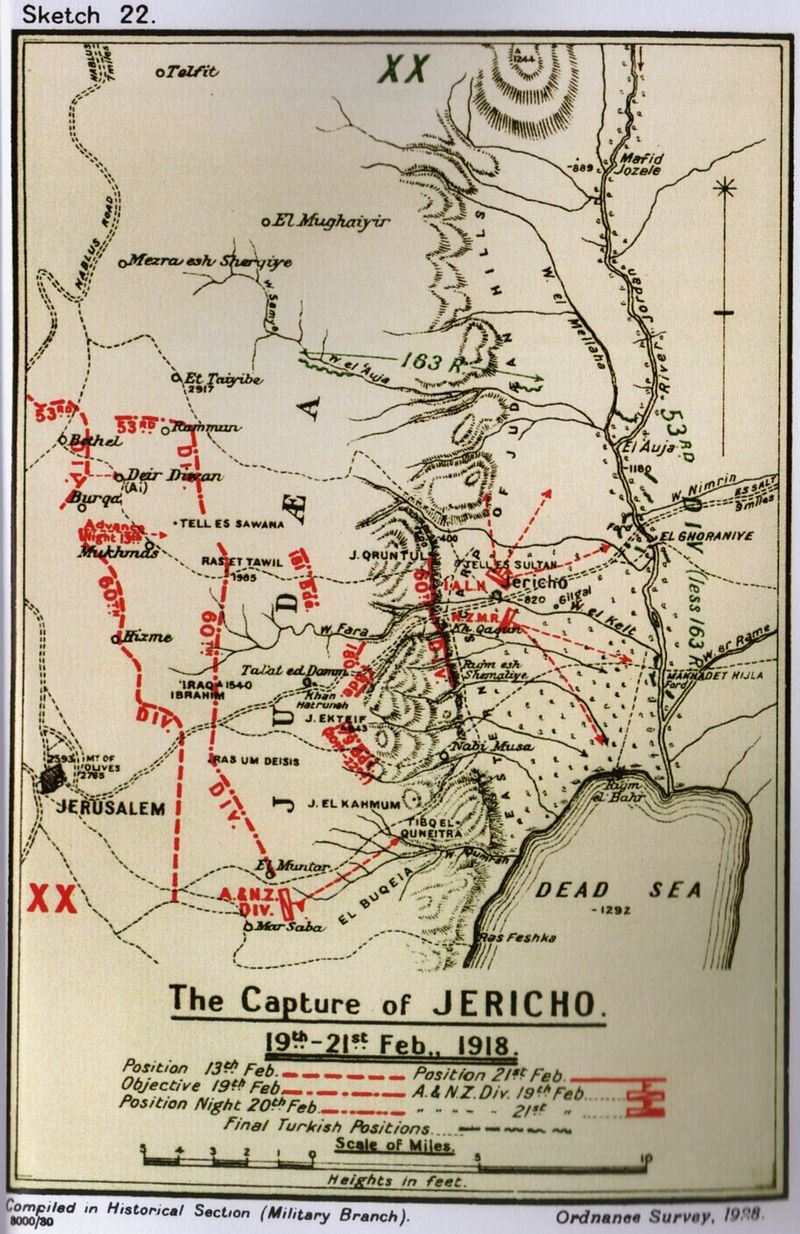trying to hold off the advancing British near Amman, as
described here, from the Turkish point of view, by Major
Vecihi.//
'First Transjordan Attack' click here for a description of
this battle from the English perspective.

So, while we were busy preparing to defend the front line where we
remained, a proposal was made for an attack by the 7th and 4th Armies
on Eriha (Jericho) from both the west and the east of the Şeria (Jordan)
River. At the time we heard that General Liman von Sanders (YAG
Commander) had suggested this attack to the commander of the 20th
army corps, which was situated on the west side of the Şeria.
In order for this attack to be successful, the 8th army corps, on the east
side of the Şeria River would have to participate. At that time, the 8th
army corps was primarily defending the Tel Nemrin valley, where the
Eriha-Es Salt road ran, and the Seyr Valley leading to Amman.
One morning, General Limon von Sanders visited the 8th army corps's
location and after surveying the battlefront from atop a hill, he opined
that the 8th army corps's infantry and artillery troops should approach
the Şeria River to draw the enemy forces forward. Meanwhile, cavalry
forces would cross the river on the left, approach Eriha (Jericho) from
the rear and threaten the enemy's line of retreat.

It was known that in olden times the Bedouins had used fords at Lehcle
and Elhenu along the Şeria as crossing points. However, only the
Bedouins knew during which seasons this could be done and even if
the season was suitable at this time, it would be impossible for cavalry
regiments to make the crossings. A number of reconnoitering missions
confirmed this.
The terrain here was extremely challenging. We had thought that the
Bahr-ı Lut (Dead Sea) basin was flat but all of a sudden one would
encounter deep and wide new valleys. You could spend hours roaming
around and still not find paths to descend and ascend these valleys.
There were many deep, sharp crevices cut by floods and rain along the
Şeria from start to finish, along with frightful, naked sand dunes,
mountains and hills. Without following a known route after crossing
the Şeria it would be impossible for troops and, especially, cavalry to
proceed. The heat in the mountains never went below 40 degrees
(104 Farenheit) and it rose to 60-70 (140-150 Farenheit) degrees along
the river shore.

The rugged Transjordan theater of operations (21 March-2
April; 30 April-4 May; and 20-29 September 1918).
//END of PART X//

Hiç yorum yok:
Yorum Gönder